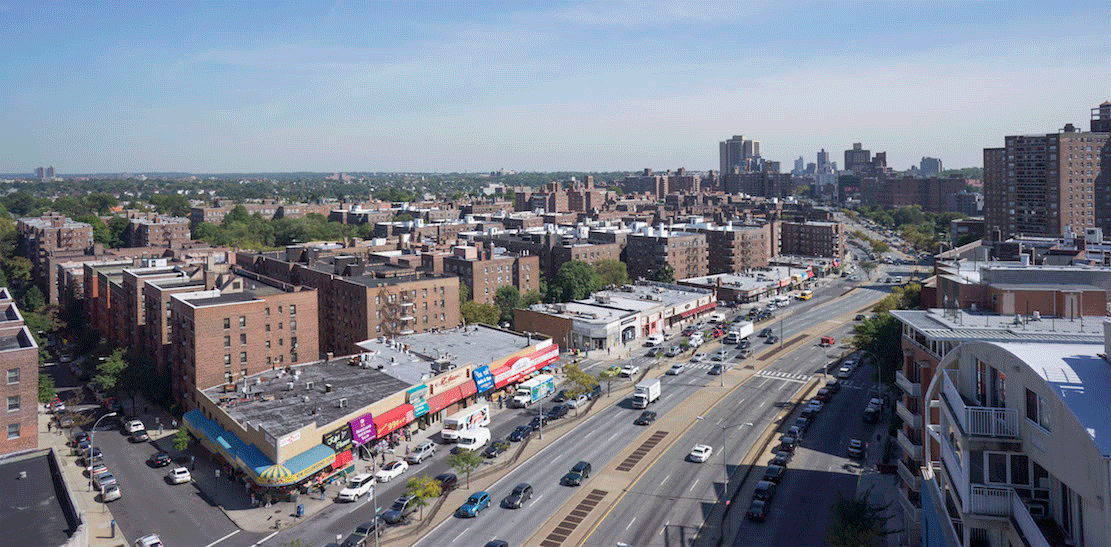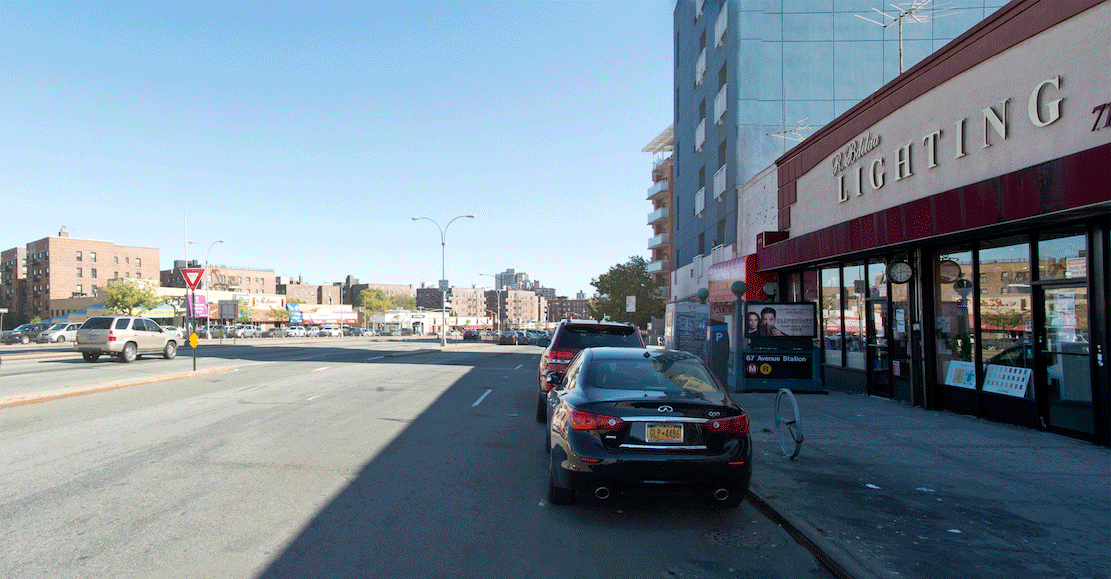TO STOP PEDESTRIAN DEATHS NEW YORK CITY MUST CHANGE THE WAY IT BUILDS ITS STREETS
November 13th—Friday the 13th—marked the 13th day in a row that a pedestrian died on a New York City Street, all killed by cars or buses going too fast. They were among the 19 pedestrian deaths in the city last month—basically, one person lost for every business day. These fatalities occurred because despite all the progress New York has made since Mayor de Blasio and his DOT Commissioner Polly Trottenberg signed the Vision Zero Pledge in December 2013 (more on this below), most of our city streets are still seen primarily as transportation corridors for cars and trucks.
Until we prioritize pedestrian safety over traffic flow, we will never get to zero deaths for pedestrians, cyclists, drivers, or their passengers. But the good news is that when we do make streets that are safe for pedestrians, traffic still flows—and it becomes easy to design streets where people can want to get out of their cars and walk, enjoying public life. Which, after all, is what city life is all about. We don’t have to choose between pedestrian plazas in Times Square and suburban-style arterials. We can have our cake and eat it too.
A little history is relevant here: for decades, our city streets have been controlled by the DOT—the Department of Transportation— which employs traffic engineers and transportation planners who have traditionally seen their job as making traffic flow quickly and safely. They use a federal grading system that grades street quality according to the “Level of Service” (LOS)—a measurement of how well traffic moves.
Anything that impeded traffic flow was a problem to be identified and eliminated. Trees became known as Fixed Hazardous Objects (FHOs), because they damage cars that hit them. Standard practice in traffic engineering is therefore to confine trees to a Vegetative Containment Zone kept away from the vehicles.
People are called MHOs—Moving Hazardous Objects. They also slow down and damage cars that hit them, and so they’re kept away from the cars too.
Continue reading at CityLimits.org
Continue reading at Better Cities and Towns (more photos)
A Sreet Is A Terrible Thing To Waste — from New York State Conference of Mayors Summer Bulletin
THINK OF A CITY AND WHAT COMES TO MIND?
“Streets and their sidewalks, the main public places of a city, are its most vital organs. Think of a city and what comes to mind? Its streets. If a city’s streets look interesting, the city looks interesting; if they look dull, the city looks dull.” — Jane Jacobs, The Death & Life of Great American Cities
There’s a revolution going on in how we use our streets, but the evolution of the revolution is slow. Complete Streets, Slow Streets, Open Streets—what would Jane say?
Join CNU NYC and John Massengale for a virtual tour of Jane’s Greenwich Village, a history of New City streets, and a discussion of Streets for People and Slow New York.
WHEN: Tuesday, May 4 (Jane’s Birthday), 3 PM (Happy Hour to Follow — BYOB)
REGISTER: MAS Janes Walks
The photo above shows CNU NYC’s 2020 Jane’s Walk on Charles Street in Greenwich Village. Below is Jane Jacobs at the White Horse Tavern. Jane’s house at 555 Hudson Street was on the same block.
WE BUILT THIS CITY TO WALK AND STROLL
“What if we treated historic districts historically, making the cars accommodate the city, rather than the other way around?
Streetsblog Op-Ed: If Not Now, When? Changing the Car Culture
“We worked for years to reduce car use. If everybody drives a car, there is no space for people, there is no space to move, there is no space for commercial activities outside the shops.” ~ Milan deputy mayor Marco Granelli
In normal times, we have too many cars moving around New York City. Why? Because we spend billions of dollars on roads and highways that encourage people to drive. Milan, Brussels, and Paris are all using Open Street experiments during the pandemic to permanently change the driving culture in their cities. Here in New York, we can do that too.
Read the rest of the op-ed at Streetsblog.
NEW YORK QUIET STREETS — MAKING LEMONADE FROM LEMONS
Yorkville Promenade (Second Avenue), New York, New York, Massengale & Co LLC and Dover, Kohl & Partners, 2011. An aerial view looking south from 86th Street.
A Streetsblog Op-Ed from John Massengale:
Gov. Andrew Cuomo and City Council Speaker Corey Johnson called for making New York City streets safer for pedestrians and social distancing while we all stay close to home. Mayor de Blasio responded with a program to open more space for pedestrians on one street per borough.
We can do more. We should use this time when traffic is light to work on ideas for safer, quieter, and more pleasant streets for pedestrians and cyclists now and in the future. During this COVID-19 crisis, we can implement ideas that are great for the long-term health of the city. Specifically, let’s make some of our quiet side-streets primarily for cyclists and walkers.
Quiet Streets (continue reading at Streetsblog)









